Intellinet 506441 Handleiding
Intellinet
Schakelaar
506441
Bekijk gratis de handleiding van Intellinet 506441 (6 pagina’s), behorend tot de categorie Schakelaar. Deze gids werd als nuttig beoordeeld door 132 mensen en kreeg gemiddeld 4.9 sterren uit 66.5 reviews. Heb je een vraag over Intellinet 506441 of wil je andere gebruikers van dit product iets vragen? Stel een vraag
Pagina 1/6

Rackmount
kVm
Switch
uSeR
manual
Models
506441 &
506496
INT-506441/506496-UM-Ml1-0810-01-0
Model 506441: 8-Port
Model 506496: 16-Port

2ENGLISH
Rackmount KVM Switch • User Manual English
INTRODUCTION
Thank you for purchasing the INTELLINET NETWORK SOLUTIONS™ 8-Port Rackmount KVM Switch, Model 506441 or 16-Port Rackmount
KVM Switch, Model 506496. For a full list of specications, refer to the datasheets available at www.intellinet-network.com.
The USB and the PS/2 interface standard on both console side and PC side makes this switch especially useful in an environment with
mixed equipment; e.g., older computers with PS/2 connections and newer models featuring USB ports. With the ability to manage and
control multiple PS/2 or USB computers from a single console, you’ll also be able to enjoy these convenient features:
Package Contents
• Rackmount KVM Switch: 8-Port, Model 506441 or 16-Port, Model 506496
• 19” rackmount brackets
• 4-in-1 connection cables: 8 with Model 506441 or 16 with Model 506496
• User manual
INSTALLATION
Rackmounting
To install the Rackmount KVM Switch in a standard 19” rack unit, simply screw the two
mounting brackets to the sides of the switch (screws and brackets included). NOTE: Two sets
of pre-drilled holes let you connect the brackets so either the front panel or the rear panel of
the switch is facing out. Then attach the two brackets to the rack.
Rear Panel Connections
Before making any power or network connections to the Rackmount KVM Switch, make sure that all devices in the conguration are
turned o and properly grounded.
1. Connect the USB or PS/2 keyboard and mouse and the monitor of your command (console) computer to the corresponding plugs in
the console section of the switch’s rear panel (highlighted at
right).
2. Plug the HD15 connector on one of the included 4-in-1
connection cables into any of the PC ports to the right of the
console section on the rear panel of the switch, then plug the
keyboard/mouse and monitor connectors on the other end of the
connection cable into a computer to be included in the
conguration. Repeat this step for as many computers as you
desire and the switch allows (8 or 16 total). NOTE: The shape of these HD15 connectors has been modied so that only KVM cables
designed to work specically with this series of switches can be properly plugged in. Do not try to use ordinary 15-pin VGA connector
cables in your conguration.
3. Plug the included power adapter into the DC9V jack, then connect it to an AC power outlet and turn on the computers.
Front Panel Controls and Indicators
The port LEDs (1-3 are shown at right for reference) indicate the status of the ports as determined by using either the corresponding
buttons on the switch — below the LEDs — or the On-Screen
Display (OSD).
• The On Line LEDs light red to indicate that the computer
connected to the corresponding port is powered on.
• The Selected LEDs light green to indicate that the computer
connected to the corresponding port is the one currently
selected and controlled by the console.
• The Port Selection buttons can be pressed to select and control the computer connected to the corresponding port.
• The recessed Reset button can be pressed (using a pin or similar pointed object) to reset the switch if it isn’t responding.
OPERATION
Hot Plugging
The Rackmount KVM Switch supports hot Plug and Play: Computers can be removed from the conguration and added back into it
simply by disconnecting then re-connecting their cables from their PC ports — without the need to turn o the switch. The computer,
however, must be re-connected to the same port as before for this feature to work properly. NOTE: The console section doesn’t support
hot-plugging of a PS/2 keyboard or mouse.
8-port rear panel
12
3
• Pop-up on-screen display (OSD) menu
• Computer selection and operation using
front-panel push buttons and OSD menu
• Hot Plug and Play: no need to shut down
the KVM switch to attach or remove PCs
• Numerical display and LED indicators for
easy bank/port status monitoring
• Screen resolution support up to 1600 x 900
• Support of Microsoft and Logitech standard
5-key mice and compatible models
• Auto-Scan period programmable via OSD
menu option
• Password protection
• Auto-logout timeout support

3
ENGLISH
Powering O and Restarting
If the switch needs to be turned o, follow these steps before turning it back on:
1. Turn o all computers attached to the switch.
2. If the switch is operating under external power, disconnect the power adapter from the switch.
3. Wait 10 seconds, then re-connect the power adapter and turn on the computers.
On-Screen Display (OSD)
In addition to selecting a networked computer by pressing its corresponding Port Selection button on the front panel of the switch, all
computer control and switching procedures can be performed using the On-Screen Display (OSD).
• To display the main menu, press < > on the keyboard twice. CTRL
• If the OSD menu is set as “Console locked,” you need to input a password each time the main menu appears. If no password has been
set, just press <Enter> to display the main menu. There are two passwords in the OSD: the user password, which is not pre-set; and the
factory password, which is “INTELLINET.”
• The OSD always starts at the List screen, with the highlight bar in the same position as when the OSD was exited.
Navigation
• To exit the OSD, press <Esc>.
• To move up and down through the menu one line at a time, use the Up and Down Arrow keys. If there are more listed entries than what
can appear on the main screen, the screen will scroll.
• To activate a port, move the highlight bar to it and press <Enter>.
• After you select a port, the OSD menu automatically disappears and the port currently selected is indicated.
Main Screen Headings
PN — This column lists the port numbers for all the CPU ports on the installation. The simplest way to access a particular computer is to
move the highlight bar to it, then press <Enter>.
QV — If a port has been selected for Quick View scanning,
4
displays in this column.
PC — If a computer is powered on and on line,
4
displays in this column.
NAME — Any name assigned to a computer appears in this column.
Functions
The OSD can be controlled and re-congured using the functions described below.
F1 GOTO — GOTO allows you to switch directly to a port by keying in either the
computer’s name or its port number (PN).
• To use the name, highlight “NAME,” press <Enter>, input the name of the computer,
then press <Enter> to conrm. If there is a matching name, it will display on the
screen. Press <Enter> to switch to that port.
• To use PN method, highlight “PN,” press <Enter>, input the port number, then press <Enter> to switch. If the port number is invalid,
it will prompt you to try again.
• To return to the main menu, press <Esc>.
F2 SCAN — This allows you to automatically scan from the current selected port through any active and connected computers. While
scanning, a small window on the screen indicates the current port number. To stop scanning (and continue viewing the last computer
scanned), press the space bar. The scan interval can be set by the user.
F3 LIST — This lets you broaden or narrow the range of ports displayed on the main screen. Many of the OSD functions described below
only operate on the computers listed on the main screen (selected by using this function).
• ALL lists all of the ports in the conguration.
• QVIEW lists only the ports that have been selected as Quick View ports.
• POWERED ON lists only the ports that have their attached computers powered on.
• POWERED ON + QVIEW lists only the ports that have their attached computers powered on and have been selected as Quick View
ports.
• QVIEW + NAME lists only the ports that have been selected as Quick View ports and have been assigned names.
• NAME lists only the ports that have been assigned names.
Highlight a function and press <Enter>. When the conrmation icon displays alongside your selection, press <Enter> to return to the
OSD main screen with the newly formulated list displayed.
F4 QV — This lets you select a port as Quick View. Highlight a port and press <F4>. The icon displays to conrm your selection. Press
<F4> again and the icon disappears.
F5 EDIT — This lets you create or edit the name of a port. Press <F5> and a pink edit box will appear on the screen. Input a name, press
<Enter>, and the port name will be set and displayed.
F6 SET — This lets you congure the OSD menu. Highlight an option and press <Enter> to change settings.
• CHANNEL DISPLAY MODE oers three options for what appears in the tip window:
- PN + NAME
- PN (port number only)
- NAME
• CHANNEL DISPLAY DURATION oers two options for the length of time the tip window remains on the screen:
- 3 SECONDS
- ALWAYS ON
• CHANNEL DISPLAY POSITION lets you re-position the tip window. When the window appears on the screen, use the arrow keys to
move it, then press <Enter> to set the new position.
• SCAN DURATION oers eight options for the amount of time each connected computer is scanned, ranging from 3 to 60 seconds.
• SET PASSWORD lets you change the current password as directed on screen.
• CLEAR THE NAME LIST lets you remove any names assigned to the ports. NOTE: This requires a password.
• RESTORE DEFAULT VALUE lets you return to the default settings. NOTE: This requires a password. The user password will be cleared,
but not the factory password.
• LOCK CONSOLE means you cannot switch or scan once this function is activated. Selecting this same option when the console is
locked will unlock it. NOTE: Both of these options require a password.
Product specificaties
| Merk: | Intellinet |
| Categorie: | Schakelaar |
| Model: | 506441 |
| Kleur van het product: | Zwart |
| Gewicht: | 4400 g |
| Diepte: | 155 mm |
| Hoogte: | 45 mm |
| Gebruikershandleiding: | Ja |
| Stroomvoorziening: | 230 V |
| LED-indicatoren: | Status, Y |
| Connectiviteitstechnologie: | Bedraad |
| Maximum resolutie: | 1600 x 900 Pixels |
| Aantal USB 2.0-poorten: | 8 |
| Certificering: | FCC Class B, CE, RoHS |
| Aansluiting voor netstroomadapter: | Ja |
| Voldoet aan industriestandaarden: | USB 1.1 / 2.0 |
| Soort voeding: | AC/DC |
| Temperatuur bij opslag: | -20 - 40 °C |
| Luchtvochtigheid bij opslag: | 0 - 90 procent |
| Externe adapter: | Ja |
| Maat: | 19 " |
| Aanbevolen resolutie: | 1600 x 900;350 MHz |
| Afmetingen (B x D x H): | 440 x 155 x 45 mm |
| Aansluiting video: | VGA |
| AC-ingangsfrequentie: | 50 Hz |
| Bedrijfstemperatuur (T-T): | 0 - 40 °C |
| Relatieve vochtigheid in bedrijf (V-V): | 0 - 80 procent |
| Bevestigingsstandaard: | 1U/19" |
| Code geharmoniseerd systeem (HS): | 85176200 |
| Aantal poorten: | 8 |
| Aansluiting toetsenbord: | USB, PS/2 |
| Aansluiting muis: | USB, PS/2 |
| Aantal computers: | 8 |
Heb je hulp nodig?
Als je hulp nodig hebt met Intellinet 506441 stel dan hieronder een vraag en andere gebruikers zullen je antwoorden
Handleiding Schakelaar Intellinet
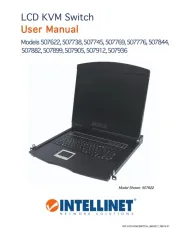
4 Juni 2025
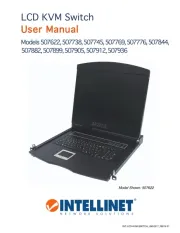
3 Juni 2025
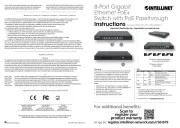
3 Juni 2025
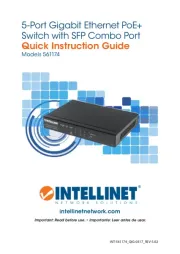
4 Mei 2025
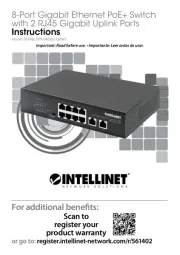
15 April 2025

15 April 2025
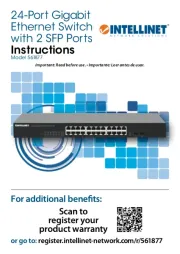
15 April 2025
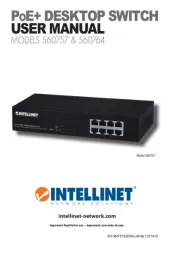
15 April 2025
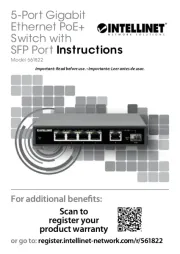
15 April 2025
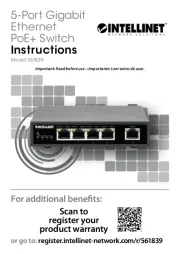
15 April 2025
Handleiding Schakelaar
- Eaton
- StarTech.com
- Epiphan
- Sygonix
- STI
- Manhattan
- PureLink
- AV:link
- Goobay
- SmartAVI
- Vemer
- Juniper
- Victron Energy
- Nedis
- ZyXEL
Nieuwste handleidingen voor Schakelaar
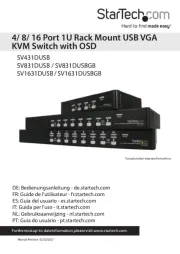
9 September 2025
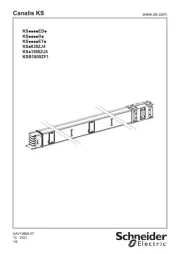
9 September 2025
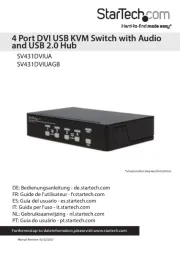
8 September 2025
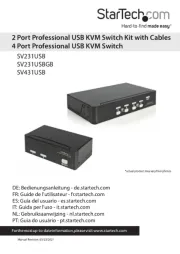
8 September 2025

2 September 2025

26 Augustus 2025
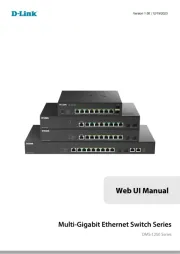
26 Augustus 2025
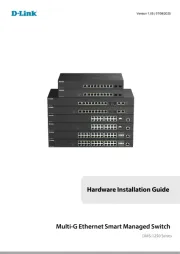
26 Augustus 2025
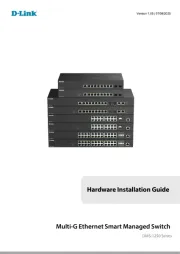
26 Augustus 2025
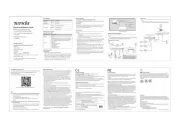
26 Augustus 2025